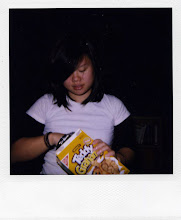I've always thought about my baby pictures, or rather the lack of. Contrary to Elsbeth's reasons, I contributed mine to the fact that I was the fifth, and last child. The first couple of kids are always exciting and new and you want to capture each moment, then it gets kind of old and tiresome. I saw the same thing with my sister's children. The oldest one was the first grandchild of both sides, and they sent out welcome photographs to family and friends, whereas the second one was kind of shafted. (Shame cause my younger nephew is way cuter).
Though I'd
like to have more baby pictures of me, it doesn't bother me too much. Partly because I've never had it before, so I don't really know the sentimental value of it. And partly because I live in such a digitized world, that the internet can look up my genealogy, as well as keep pictures of me and my family from years past.
I do have to say that the reasoning behind photographing baby pictures as a way to document biological histories is something that still carries on today. Perhaps it is as much of an implication as saving the anglo-saxon race, but if it does not raise some sort of understanding about our biological bodies, then it is about revving certain nostalgic emotions. Bell Hooks' story brings up a more emotional side. She raises a point when she sees a rare photograph of her father's young self, that her and her sisters' "experience of this image is shaped by [their] relationship to him, to the world of childhood and the images that make [their] life what it is now." It seems that looking back in our history, how we feel, even of people that are close to us, is very much influenced by what has happened since that image was taken. Hooks moves on and becomes nostalgic about an image of herself when she was younger, and I find this to best capture what most people may feel, but not realize, when seeing a younger picture of themselves. "My favorite childhood snapshot then and now shows me in costume, masquerading. And long after it had disappeared I continued to long for it and to grieve. I loved this snapshot of myself because it was the only image available to me that gave me a sense of presence, of girlhood beauty and capacity for pleasure."
At the end of the day, images prove something. For Hooks, it proves that there was a time when she was innocent and pure. It proves that blacks were there, and they were able to participate in creation of art. It proves that racial features. It helps them remember that there was that certain moment, that it happened and they were there.
In light of baby pictures, here are a few of mine that I dug up this past summer:
I plan to submit this one to one of those websites where you find an old photograph and re-create it in the exact same pose, background, clothing, etc.


This is the one where I look like a manatee:











